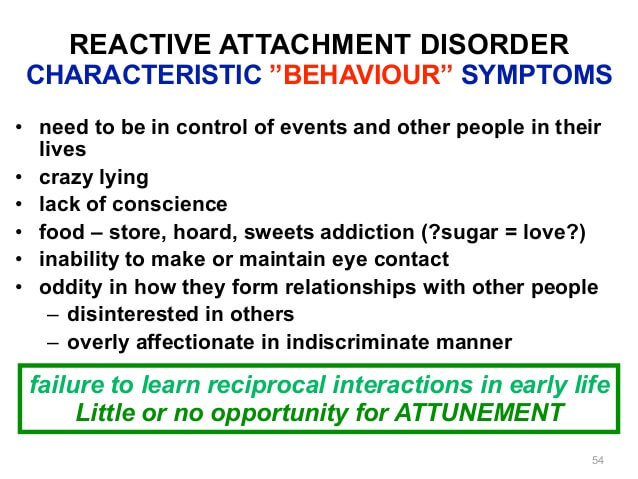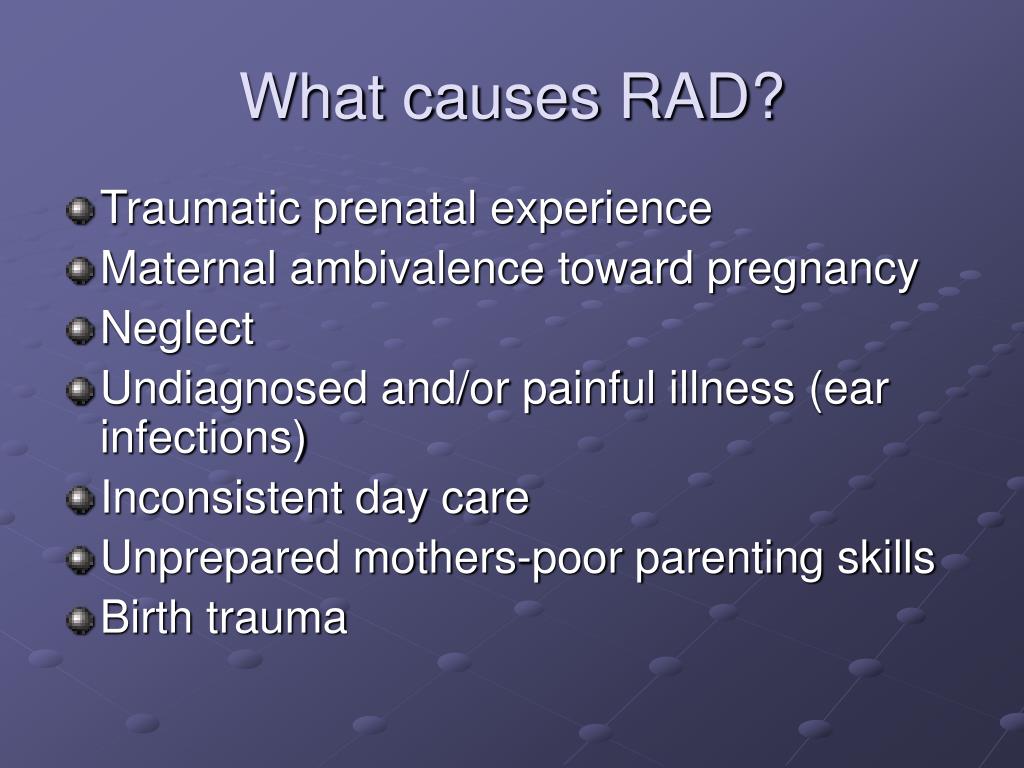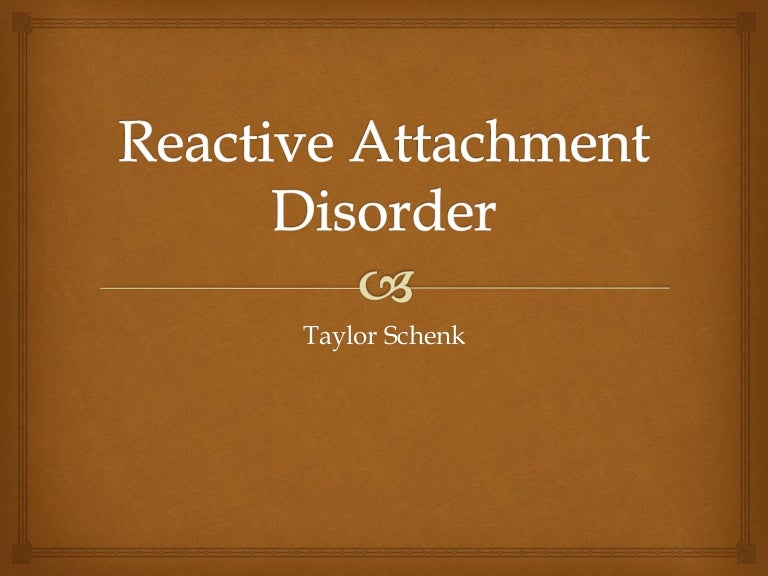

We discuss the clinical and educational implications. We found that children with RAD are more likely to have multiple comorbidities with other disorders, lower IQs than population norms, more disorganised attachment, more problem behaviours, and poorer social skills than would be found in the general population and therefore have a complex presentation than can be described as ESSENCE. This paper describes the characteristics of all children who were given a suspected or likely diagnosis of reactive attachment disorder in an epidemiological study of approximately 1,600 children investigating the prevalence of RAD in the general population. Previous research has shown that children with RAD may have poor cognitive and language abilities however, findings mainly come from biased, institutionalised samples. The three therapeutic ingredients for a child to develop new patterns of emotional attachment are security, stability, and sensitivity.Reactive attachment disorder (RAD) is a severe disorder of social functioning.
#RAD DISORDER PROFESSIONAL#
Specific parenting patterns in conjunction with professional psychological therapy are the first-line approach to helping a child cope with reactive attachment disorders. This approach should take place in front of the primary caregivers to allow the child to express his/her needs, anxieties and fears through the context of play.

Play therapy is the most proven approach used by therapists for children with RAD. However, keeping a solid foundation of these three therapeutic ingredients will lead to a transition in emotions and behavior in the child.

This process may take a very long time-even years. It is important to attend to the child’s needs in the most sensitive manner possible. The primary caregiver must practice love and sensitivity even when the child acts out. A stable and repetitive everyday routine must be practiced for the child to regain trust and normalcy in their life. Boundaries must be set, but in a loving and empathetic fashion. The primary caregiver must practice extreme patience and give ample time for the child to express his or her emotions. The three therapeutic ingredients for a child to develop new patterns of emotional attachment are security, stability, and sensitivity. Specific parenting patterns in conjunction with professional psychological therapy are the first-line approach to helping a child cope with attachment disorders. However, adoptive children are at an increased risk for reactive attachment disorder, which results from the disruption of the attachment process by neglect, physical abuse, sexual abuse, or frequent change in the primary caregivers in the first few years of the child’s life. This bond can be reformed over time with the proper physical and emotional care. Strong emotional and physical attachment to a parent is important for development during childhood, so that there can be secure relationships in adulthood.įor many adopted children, the attachment bond is broken-sometimes multiple times-if the child is passed around foster care before finally settling into a permanent adoptive family. The attachment bond can become stronger throughout infancy and childhood with more physical touch and comfort. For the mother, attachment begins immediately after birth. For the baby, attachment begins while in utero when nourishment is needed from the mother’s placenta. Reactive attachment disorder (RAD) refers to the physical, psychological, and even biological bond that occurs between a child and their primary caretaker, such as the mother and father. What is Reactive Attachment Disorder (RAD)?


 0 kommentar(er)
0 kommentar(er)
